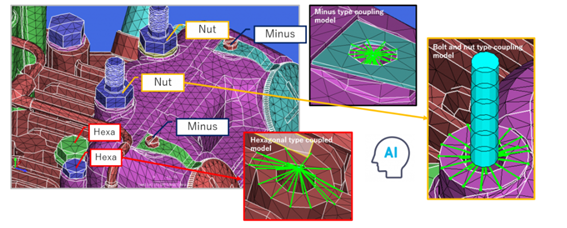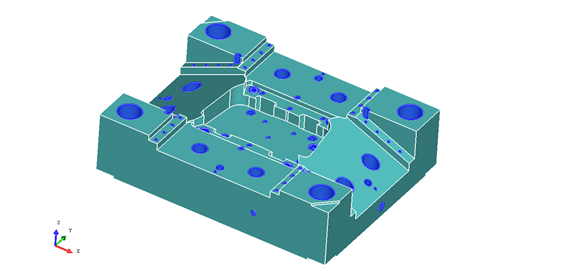3D shape classification
Here is an introduction to the 3D shape classification technology that we have developed as a world pioneer.
What is 3D shape classification?
3D shape classification refers to the process of classifying input 3D shapes into predefined classes, and we are the pioneer in the world in developing a 3D AI model that performs 3D shape classification.
For example, consider classifying bolts and screws that are always included in a product.
Although it can be classified by the entire shape of the bolt, it is also possible to classify only by the bolt head because the characteristic of the bolt is the shape of the bolt head.
It uses 3D convolution technology that preserves the features of the shape as much as possible, so it is possible to classify either by focusing on one part of the shape or by looking over the entire shape.
3D shape classification training
Bolt’s AI model training uses supervised data labeled with a predefined class name (such as Round Head Minus), as shown in the figure below.
In the 3D AI model, the features of the bolt head are extracted and trained by the 3D CNN for each class.

Introducing a demo site for 3D shape classification
We have a demo site for 3D shape classification.
At the demo site, you can try AI models that classify bolts, pipes, and manifold shapes. Bolts are classified according to the shape of the bolt head, pipes identify the number of branches, straight pipes, and curved pipes from the entire pipe shape, and manifolds identify the number of branches.
Application of 3D shape classification
In addition, 3D shape classification can be used not only for classification but also for other tasks.
When creating a mesh model for CAE simulation analysis from an assembly CAD model such as an engine, the CAE coupling model according to the classified bolt type can be automatically inserted, and the time required to create a series of mesh models can be significantly reduced.
Hundreds of bolts were used in the assembly model of the engine, and it took a lot of time to create the CAE coupling model.

In addition, when calculating the cutter path for NC lathes for injection molding dies and forging dies, the bolt hole shape can be identified from the mold model and automatically deleted from the overall shape.
This is because the bolt holes are created after NC machining and must be removed from the overall shape before calculating the cutter path.
